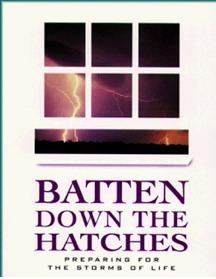 Doesn’t it seem like someone has already made a decision to go forward, and we are going to have another crossing in Windsor whether it is needed or not?
Doesn’t it seem like someone has already made a decision to go forward, and we are going to have another crossing in Windsor whether it is needed or not?
Doesn’t it seem like someone has already made a decision where roads, a new bridge and plaza are going to be constructed regardless of Community concerns on both sides of the river?
Doesn’t it seem like we are involved in a process that is costing millions and millions of taxpayer dollars in studies and may cost billions by the time this is done that seems out of our control?
If that is what you are thinking, then perhaps the next book on the Oprah Book Club list of required reading (which Eddie will read a few times thereby becoming an expert on the subject as he has done with several other books) should be Bent Flyvbjerg’s “Megaprojects and Risk: An anatomy of Ambition.” He is a Professor of Planning at the Department of Development and Planning at Aalborg University, Denmark. Check out what I have posted about him already at April 13, 2006 “Windsor's "Big Dig." Thanks to a reader for suggesting I do some research on Prof . Flyvbjerg's theory!
It seems strange already:
Hundreds of millions of taxpayer dollars spent for an Ambassador Gateway project and now seemingly going to be tossed away so that billions can be spent on a new crossing a mile away
A new crossing may destroy communities on both sides of the border so international trucks can go across the river more easily and not spend one penny in the cities impacted
4 new Customs booths on the US side costing a few million dollars solved our back-up problems in Windsor not a Horseshoe Road costing multi-millions
$21 million for studies on the US side only are projected (never mind what was already spent before the EA started) and millions more on our side
We spend $5 million on an overpass on Huron Church, even though one was offered at no cost before, and few use it.
We want to spend $30 million for what is, in effect, a vehicle “parking lot” at the Tunnel Plaza and not one vehicle will go through the Tunnel more quickly
Billions to be spent but no one has the nerve yet to tell us the real price, especially if there may be some road tunnels on our side
How would the new bridge undercut the tolls at the Ambassador Bridge given its gigantic cost and remove one truck from the existing crossing with the tougher question being who would finance it in the first place
Traffic projections always rising notwithstanding several revisions downward and issues like restructuring of manufacturing in the auto industry, Border ID requirements and no smoking rules all pointing to less cross-border traffic
Private enterprise proponent projects tossed out
It is the public who pays the cost with excessive "tolls" being the way the money is recouped. Of course truckers will not pay the higher amounts and will seek less costly alternatives while the projected volumes will be lower thereby causing huge losses which will bankrupt the bridge.
We know that no one in a position of political power is going to do anything about DRIC on the Canadian side: it is too valuable politically since one can pass the buck to them for the time being just as Dwight and Sandra did recently. DRIC is also valuable to kick at by creating scare-mongering if one is going for re-election after failing on the border issue as Eddie and Council are doing. We will have to see if the Michigan Governor or legislators have the nerve to kill DRIC or at least put it in limbo until some serious questions are answered satisfactorily.
To give you an idea in more detail about what the Professor is saying about megaprojects, I found this article that he wrote on the Internet and am setting out some excerpts from it.
Machiavellian Megaprojects
Bent Flyvbjerg
Department of Development and Planning, Aalborg University, Aalborg, Denmark;
Which projects get built? We found it isn’t necessarily the best ones, but those projects for which proponents best succeed in conjuring a fantasy world of underestimated costs, overestimated revenues, undervalued environmental impacts and overvalued regional development effects.
Machiavelli seems to have been Chief Adviser on these projects with his observation that ‘‘princes who have achieved great things have been those…who have known how to trick men with their cunning, and who, in the end, have overcome those abiding by honest principles’’.
In fact, there seemed to be a formula at work:
(underestimated costs) + (overestimated revenues) + (undervalued environmental impacts) + (overvalued economic development effects) = (project approval)
Many project proponents don’t hesitate to use this Machiavellian formula for project approval, even if it means misleading parliaments, the public and the media about the costs and benefits of projects. The result is an unhealthy ‘‘survival of the unfittest’’ for large public works and other construction projects.
During project implementation, when fact defeats fiction, the consequence is huge cost overruns, delays, revenues that don’t materialise, crippling debt and, to add insult to injury, often also negative environmental and social impacts.
Examples from transport, the main focus of our study, include Boston’s ‘‘Big Dig’’, aka the Central Artery/Tunnel Project, which is 275%, or US$11 billion over budget in constant dollars. The Channel tunnel between the UK and France came in 80% over budget with a cost overrun of US$4.5 billion and patronage 50–80% under the forecast. From the opening, Eurotunnel, the company that owns the tunnel, was locked in a debt trap from which it has never escaped. The Los Angeles Subway and many other urban rail projects around the world have similar problems. The cost overrun for Denver’s US$5 billion international airport was close to 200% and passenger traffic in the opening year was only half of that projected.
Funding such underperformance is an inverted Darwinism where the worst projects survive. It is the material of which financial and other disasters are made.
Each and every large construction project does not follow the pattern of understated costs and overstated benefits, needless to say. But most do. Nine times out of ten, costs begin to soar after projects have been approved, leaving taxpayers or investors to pick up bills of hundreds of millions of dollars. Cost overruns of 50% are common. Overruns above 100% are not uncommon. For rail projects, for example, half of all projects have cost overruns of 45% and higher. When this is combined with patronage, which for half of all rail projects is less than 50% of that forecasted, it becomes clear why so many projects have financial problems.
But are the proponents of these projects intentionally deceiving governments and taxpayers when they produce their forecasts of costs and benefits? In an uncomfortable number of cases the answer is yes.
Our data show that the old excuses—inadequate data or models, technical problems, over-optimism—are not plausible. For more than 70 years cost overruns have stayed largely constant, meaning they are highly predictable. But it seems no one is learning from past mistakes, or no one wants to learn. The situation is similar for forecasts of benefits. Either the people who do the forecasts of costs and benefits are incredibly incompetent, which is unlikely, or they deliberately manipulate costs and benefits to help projects get approved. Forecasters are on record stating the latter is the case.
The ends justify the means, or so the players reason. Moreover, the whole structure of incentives for large construction projects is geared towards underestimating costs and overestimating benefits. Each project is a multimillion and sometimes even multibillion-dollar business and when it goes forward a lot of people profit—engineers, contractors, bankers, landowners, construction workers, lawyers, developers. In addition, politicians with a ‘‘monument’’ complex gain satisfaction, administrators get larger budgets, and cities get investments and infrastructures that would otherwise go elsewhere.
Therefore, something more insidious than overt deception may be at play: a culture of covert lying. … It might seem odd that low-cost, high-benefit forecasts miraculously fit clients’ and forecasters’ silent wishes time and time again. But their wishes may not be questioned or criticised. Rather it is taken for granted that the proposed highway, stadium, dam or rail line is the correct answer to the problem, and cost–benefit estimates somehow come out just right. Like patriotism, their conviction requires no rationale and allows no serious doubt. Once politicians, stakeholders and the media accept forecasted costs and benefits as if they were hard facts, projects follow by sheer momentum. As in any other culture where critical voices are suppressed, eventually the dominant players begin to actually believe in their own deceptions.
The problem isn’t that good projects don’t exist. The problem is that the Machiavellian make-believe world of underestimated costs and overestimated benefits projected by many project proponents to promote their favourite project distorts what we know, or think we know, and makes it exceedingly difficult to decide which projects deserve undertaking and which do not. The result is that too many projects proceed that shouldn’t have done. I would like to add that many projects don’t proceed that probably should have, had they not lost out to projects with ‘‘better’’ delusion, that is ‘‘better’’ underestimates of costs and overestimates of benefits.
…scepticism must now be applied to those involved in promoting and building large public works projects. In addition to the war on corporate deception, we need a war on deception in government, and with the same objective: to curb multimillion-dollar financial waste.
Government ethics stand as much in need of betterment as corporate ethics. Key weapons in the war on deception will be accountability and critical questioning… Our studies show, however, that their claims about costs and benefits mostly cannot be trusted and should be carefully examined by independent specialists and organisations and should be open to public scrutiny.
The lying game has long historical roots and is deeply ingrained in professional and institutional practices. It would be naive to think it is easily toppled. Given the stakes involved—including billions of dollars worth of misinvestments in underperforming projects—this shouldn’t deter us from trying.
 I had a very long telephone conversation with Al Teshuba some time ago and, as he emailed to me, he believes in tunneling "as the best thing to do to facilitate international truck traffic through our city." This comment, therefore, is not meant to criticize him personally but right now he is the guy talking about tunnels in public so he gets the flack based on what he says.
I had a very long telephone conversation with Al Teshuba some time ago and, as he emailed to me, he believes in tunneling "as the best thing to do to facilitate international truck traffic through our city." This comment, therefore, is not meant to criticize him personally but right now he is the guy talking about tunnels in public so he gets the flack based on what he says.











